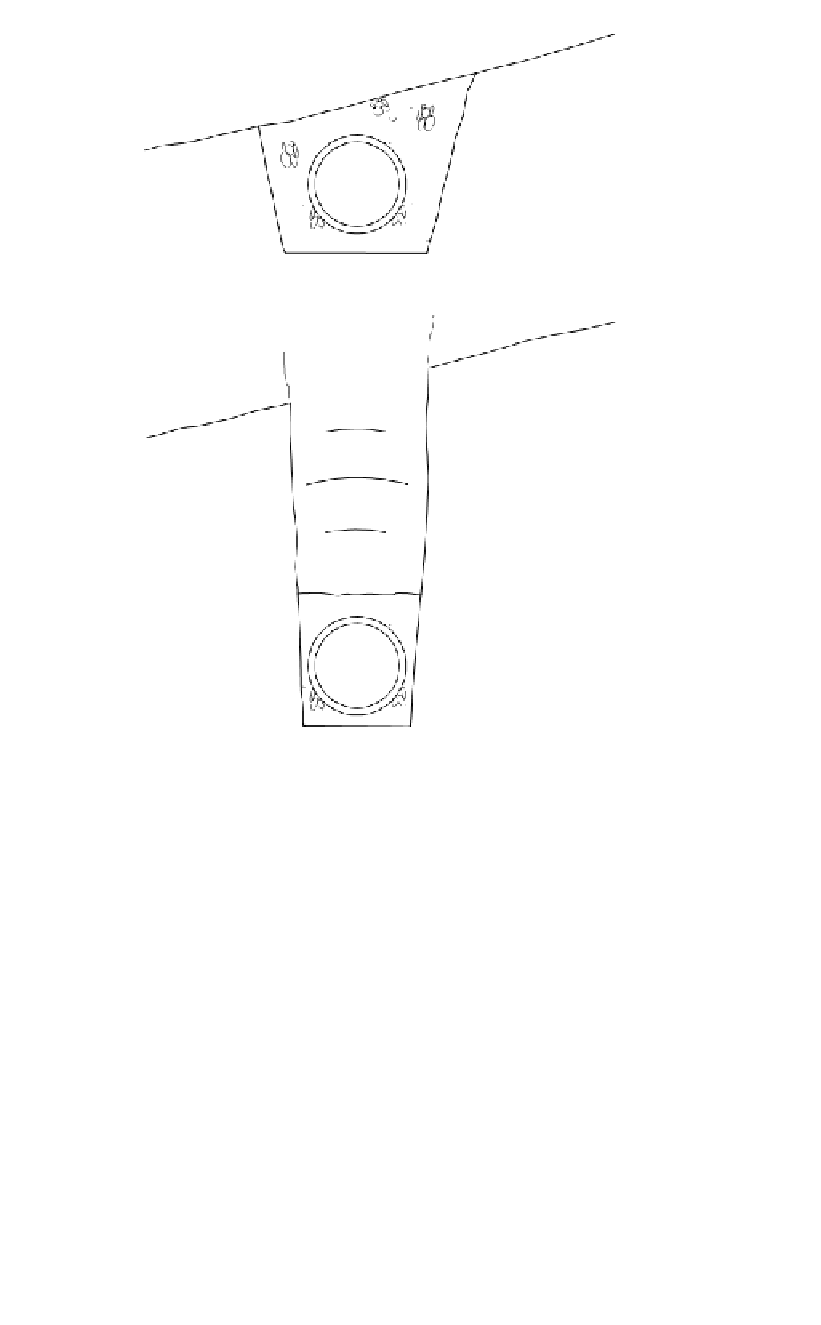Environmental Engineering Reference
In-Depth Information
dam foundation
concrete
rock
conduit
(a)
differential shears
and cracks likely
rock
arching
rock
action
compacted dam
earthfill
low stresses and
hydraulic fracture likely
(b)
concrete
conduit
Figure 13.17.
Conduit embedded in rock foundation. (a) Good practice, (b) poor practice.
(b) Where conduits must past through the embankment, as will be the case for most smaller
dams and many medium and large dams on soil foundations, the preferred detail is to
provide filters for the dam core and to take these around the conduit. If the founda-
tion is soil or erodible rock, the filter should be taken locally deeper into the founda-
tion so as to surround the pipe in a similar way to the filter diaphragm in
Figure 13.16
.
Alternatively, for low consequence of failure dams, where filters are not being pro-
vided, or zoned earthfill construction is being used, and for flood control structures
such as levee banks and dykes which have pipes or culverts through the levee, a filter
diaphragm similar to that shown in Figure 13.16 should be provided.
(c) Concrete, steel, or corrugated steel pipes should be continuously supported on a concrete
base similar to that shown in
Figures 13.18(a)
and (b). No cutoff collars should be pro-
vided. This is to allow compaction adjacent to the sides of the pipe, with rubber tyred
rollers, rubber tyred construction equipment or hand held compaction equipment con-
sistent with the strength of the pipe. The soil being compacted adjacent to the pipe
should be wet of standard optimum water content to facilitate its being rolled into the
irregular shape of the contact and to make it less likely to crack by differential settlement.
(d) Cast in-situ conduits should be constructed as shown in
Figure 13.19
with the sides
sloping no steeper than 1 Horizontal to 8 Vertical (1H:8V), so compaction equipment
can be used to the side of the pipe. The trench in which they are placed should be wide





















